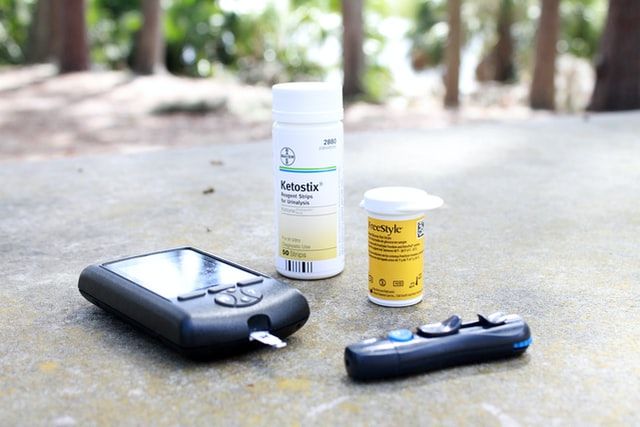
Eli Lilly Caps the Cost of Insulin
On March 1, 2023, the pharmaceutical company Eli Lilly announced in a press release that it would be capping the cost of insulin. Insulin is a ubiquitous medicine. It is crucial to the health of people who suffer from Type 1 diabetes and many who have Type 2 diabetes and gestational diabetes as well. Even though insulin is a very common medicine that more than 8 million Americans use, the price of insulin has been historically high, with the average monthly cost at $54 and as many as 24% of Americans paying $70 per month. Making this medicine more affordable is a major event in the lives of people who live with insulin-dependent diabetes.
Here’s what you need to know about this recent cost cap and what it could spell for the future.
What Is the Background of the Eli Lilly Cost Cap?
The Inflation Reduction Act of 2022, introduced by the Biden Administration, capped the out-of-pocket cost of insulin at $35 a month for Americans who receive Medicare Part D. A second wave of cost capping is scheduled to begin this summer of 2023 for Medicare Part B beneficiaries. This legislation has pressured drug companies to follow suit and cap the cost of insulin for all, not just those receiving Medicare.
How Much of a Cost Cap Did Eli Lilly Introduce?
At the beginning of March, Eli Lilly announced price reductions of 70% for its most popular forms of prescription insulin. It also announced an expansion of its Insulin Value Program, which caps the cost of insulin at $35 per month, matching the out-of-pocket monthly cost for Medicare beneficiaries. This move was recognized by many as a positive step in the right direction in the battle to increase the affordability of insulin—including an official statement from the American Diabetes Association (ADA) applauding the move, as well as a tweet from President Biden.
What Does the Cost Cap Mean for Patients With Diabetes?
When you have insulin-dependent diabetes, taking insulin every day is critical for regulating your blood sugar. Many people who take daily insulin cannot produce their own insulin, and without receiving insulin as a medication, they would quickly have severe health consequences. Insulin is vital to ensuring that blood sugar is taken up by cells so that they can go about their critical processes in the body. Without insulin, blood glucose can accumulate rapidly in the bloodstream, causing serious damage and even death.
Many patients with diabetes have borne the inordinate cost of insulin in order to meet their basic health needs. This can have an extreme impact on a family’s budget in America. However, insulin is more affordable in other countries. For example, researchers found that the average cost of a vial of insulin in the United States in 2018 was $98.70, whereas in Japan, it was $14.40, and in France, it was $9.08. Capping the cost of insulin for all could provide significant savings to millions of American families.
Will More Companies Follow Suit With Similar Cost Caps?
In its press release, Eli Lilly Chair and CEO David Ricks noted that Eli Lilly is “driving for change in repricing older insulins, but we know that 7 out of 10 Americans don’t use Lilly insulin. We are calling on policymakers, employers, and others to join us in making insulin more affordable.” Other companies that manufacture insulin may face market, social, and political pressures to follow suit and cap the cost of insulin. They might face increasing pressure to help bridge the affordability gap for this irreplaceable drug.
For example, another company, Novo Nordisk, followed suit shortly after Eli Lilly’s announcement, declaring that it would cut the cost of some of its insulin by up to 75% starting in 2024.
How to Learn More About Insulin and the Efforts to Make This Drug More Affordable for All
Soaring pharmaceutical prices affect public health communicators, people living with diabetes, and those in the general public. When the costs of drugs such as insulin are high, people are less likely to be able to afford their medicines and less likely to take their medicines as prescribed. This means unnecessary suffering for people with diabetes and other chronic illnesses, those who love them, and the general public that bears the downstream costs of poorly controlled chronic illnesses. However, the Eli Lilly price cap signals positive progress in the effort to make medications such as insulin more accessible to all.
To learn more about insulin and its affordability, make sure to check out www.diabetes.org/insulincost.
Research and materials for this article were compiled, written, and distributed on behalf of the National Public Health Information Coalition. The views and opinions expressed in this blog are those of the various authors and do not necessarily reflect the official policy or position of the National Public Health Information Coalition or its members.
Sources
[1] Lilly Cuts Insulin Prices by 70% and Caps Patient Insulin Out-of-Pocket Costs at $35 Per Month. https://investor.lilly.com/news-releases/news-release-details/lilly-cuts-insulin-prices-70-and-caps-patient-insulin-out-pocket
[2] EXPLAINER: Why is insulin so expensive and difficult to cap? https://apnews.com/article/health-prices-diabetes-congress-a2f9986b7bf3500b81d1ec80a01e5abb#:~:text=HOW%20MANY%20PEOPLE%20IN%20THE,do%2C%20it's%20an%20important%20medication.
[3] New HHS Report Finds Major Savings for Americans Who Use Insulin Thanks to President Biden’s Inflation Reduction Act. https://www.hhs.gov/about/news/2023/01/24/new-hhs-report-finds-major-savings-americans-who-use-insulin-thanks-president-bidens-inflation-reduction-act.html#:~:text=In%202019%2C%20about%2037%20percent,for%20a%2030%2Dday%20supply.
[4] Insulin Affordability and the Inflation Reduction Act: Medicare Beneficiary Savings by State and Demographics. https://aspe.hhs.gov/sites/default/files/documents/bd5568fa0e8a59c2225b2e0b93d5ae5b/aspe-insulin-affordibility-datapoint.pdf
[5] The American Diabetes Association Statement on Eli Lilly’s Expansion of Insulin Value Program. https://diabetes.org/newsroom/press-releases/2023/american-diabetes-association-statement-on-eli-lilly-expansion-of-insulin-value-program
[6] The Astronomical Price of Insulin Hurts American Families. https://www.rand.org/blog/rand-review/2021/01/the-astronomical-price-of-insulin-hurts-american-families.html
[7] Novo Nordisk will cut some U.S. insulin prices by up to 75% starting next year. https://www.npr.org/2023/03/14/1163354744/insulin-price-cuts-novo-nordisk-diabetes

